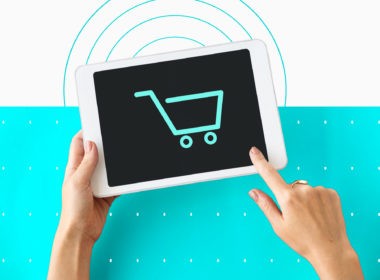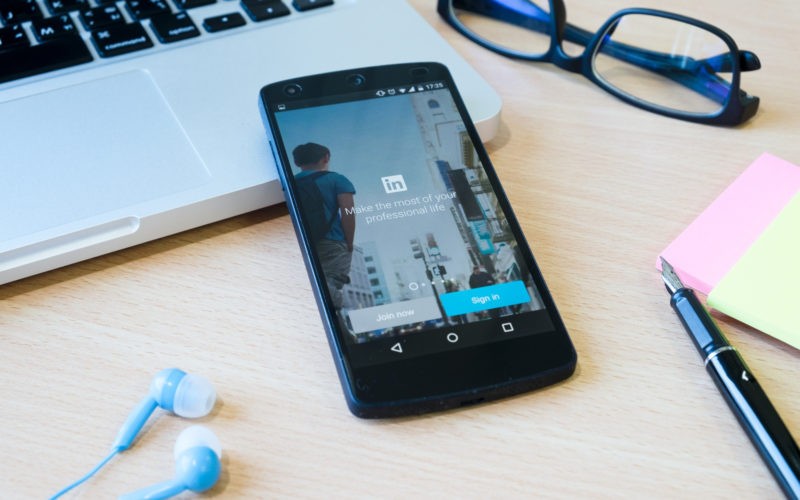With over 1 billion members across 200 countries, LinkedIn has become an essential platform for B2B sales professionals. Recent statistics reveal that LinkedIn generates 80% of B2B leads from social media, solidifying its position as the top platform for B2B sales.
This comprehensive guide will walk you through the entire LinkedIn sales process, from optimizing your profile to closing deals and maintaining long-term relationships. Whether you’re new to social selling or looking to enhance your existing strategies, you’ll find actionable insights and proven techniques to boost your sales success on LinkedIn.
1. Setting Up Your LinkedIn Profile for Sales Success
Optimizing Your Profile
Studies indicate that profiles with professional photos attract 14 times more views than those without.
- Professional Photo and Background Image: Use a high-quality headshot with a neutral background and dress professionally. Your background image should reinforce your brand or industry expertise.
- Compelling Headline and Summary: Go beyond your job title. Include your value proposition and target audience. For example: “Helping SaaS Companies Scale Revenue Through Strategic Sales Solutions | Sales Leadership | Revenue Growth Expert”
- Detailed Experience and Achievements: Quantify your achievements with specific metrics. Instead of “Increased sales,” write “Drove 156% revenue growth in 12 months through strategic account management and team leadership.”
Building Credibility
LinkedIn’s own data shows that profiles with recommendations are 3x more likely to receive inquiries for business opportunities.
- Recommendations and Endorsements: Actively seek recommendations from clients, colleagues, and industry peers. Focus on skills relevant to your target market.
- Sharing Relevant Content: Maintain a consistent posting schedule with a mix of original content, industry insights, and thought leadership. Aim for 2-3 posts per week for optimal engagement.
- With over 1.6 million feed updates viewed every minute on LinkedIn, it’s crucial for your content to stand out.
2. Prospecting on LinkedIn
Identifying Your Target Audience
LinkedIn’s advanced search capabilities make it possible to pinpoint decision-makers with unprecedented accuracy.
- Using LinkedIn Search and Filters: Leverage Boolean search operators and filters for company size, industry, location, and seniority level. Invest in specialized solutions to bypass LinkedIn search limit.
- LinkedIn Groups: Join and actively participate in relevant industry groups. It is said that there are over 2 million groups on LinkedIn, and with more than 13,000 new connections made per minute, you should focus on choosing those groups where your target audience is most active.
Building a Prospect List
LinkedIn Sales Navigator users report a 45% higher opportunity creation rate compared to basic LinkedIn users.
- Saving Searches: Create and save multiple search templates for different buyer personas.
- Sales Navigator Features: Utilize lead recommendations, account mapping, and real-time sales updates to identify warm prospects.
3. Engaging with Prospects
Initial Outreach
Personalization is key — LinkedIn InMails with customized messages receive a 15% higher response rate.
- Connection Requests: Reference shared connections, interests, or recent company news.
- InMail Best Practices: Keep messages under 100 words, include a clear call to action, and focus on value rather than selling.
Nurturing Relationships
Consistent engagement on LinkedIn significantly enhances your visibility and increases the likelihood of building meaningful connections.
- Content Engagement: Thoughtfully comment on prospects’ posts within 24 hours of their activity to demonstrate genuine interest and build rapport.
- Value-First Approach: Share relevant industry reports, case studies, or actionable insights without expecting immediate returns, fostering trust and credibility over time.
Companies and individuals who consistently engage on LinkedIn often experience significantly higher visibility and interaction rates, leading to better relationship-building opportunities.

4. Qualifying Leads
Assessing Prospect Needs
Research shows that sales representatives who engage early in the decision-making process and demonstrate a deep understanding of buyer needs have a significantly higher chance of success. According to Forrester Research, sellers who collaborate with buyers to shape their solution vision early in the journey achieve a win rate of up to 74%.
- Discovery Questions: Focus on open-ended questions that reveal business challenges and goals.
- Active Listening: Use LinkedIn messaging and calls to document and validate pain points.
Determining Fit
Apply the BANT framework while considering that 57% of the buying decision is complete before a customer contacts a supplier.
- Budget: Understand fiscal planning cycles and budget allocation processes
- Authority: Map the decision-making unit using LinkedIn’s organizational insights
- Need: Validate pain points through company updates and job postings
- Timeline: Align with business initiatives and growth plans
5. Presenting Your Solution
Tailoring Your Pitch
Customizing presentations to the specific needs and interests of your audience can significantly enhance engagement compared to a one-size-fits-all approach.
- Value Proposition: Align your solution with specific industry challenges identified through LinkedIn research
- ROI Focus: Present clear, quantifiable benefits backed by data and case studies
Delivering Compelling Presentations
Visual content gets 94% more views on LinkedIn than text-only posts. Moreover, video content is one of the fastest-growing formats on the platform, with viewership increasing 36% year-over-year.
- Visual Elements: Use infographics, charts, and videos to illustrate key points
- Social Proof: Incorporate relevant customer success stories and testimonials
6. Handling Objections
Common Sales Objections
Many potential customers may decline multiple times before committing, highlighting the importance of persistence and value-driven engagement.
- Price Objections: Focus on value and ROI rather than cost
- Timing Concerns: Use LinkedIn company insights to align with business cycles
- Competition: Differentiate through thought leadership and industry expertise
Overcoming Objections
Effectively addressing objections can dramatically improve the likelihood of closing a deal.
- Response Framework: Acknowledge, understand, respond, confirm
- Value Reinforcement: Use LinkedIn content and case studies to support your responses
7. Closing the Deal
Negotiating Terms
Leveraging social selling techniques often leads to improved win rates by fostering stronger connections with prospects.
- Value-Based Negotiation: Focus on mutual benefits and long-term partnership potential
- Proposal Timing: Use LinkedIn activity patterns to identify optimal times for sending proposals
Finalizing the Sale
Digital contract solutions tend to expedite the process and increase completion rates compared to traditional methods.
- Documentation: Use professional tools for proposals and contracts
- Follow-Up Strategy: Maintain momentum through regular LinkedIn touchpoints
8. Post-Sale Relationship Building
Maintaining Customer Relationships
Companies that prioritize strong customer relationships tend to see greater customer lifetime value.
- Regular Engagement: Schedule quarterly business reviews and monthly check-ins
- Success Sharing: Celebrate customer wins through LinkedIn posts and updates
Leveraging LinkedIn for Upselling and Cross-Selling
Engaged and satisfied existing customers are often more willing to explore and adopt new products or services.
- Opportunity Identification: Monitor company growth and new initiatives
- Strategic Account Planning: Use LinkedIn Sales Navigator for account mapping and expansion
9. Leveraging LinkedIn Analytics
LinkedIn’s robust analytics tools provide valuable insights into your content performance, audience engagement, and overall social selling effectiveness. By mastering these analytics, sales professionals can make informed decisions about their outreach strategies, content creation, and relationship-building efforts, ultimately leading to higher conversion rates and more efficient sales processes.
- Understanding LinkedIn Analytics Dashboard
- How to interpret key metrics like SSI (Social Selling Index)
- Understanding engagement rates and what they mean for sales
- Tracking profile views and their correlation with sales activities
- Tracking Content Performance
- Best times to post based on your audience’s activity
- Which content types generate the most qualified leads
- Measuring the impact of different content formats (text, polls, documents, videos)
- Using Data to Optimize Your Strategy
- Setting up custom tracking parameters
- Creating monthly performance reports
- Making data-driven decisions about outreach timing and frequency
10. LinkedIn Tools and Automation
While personal connection remains at the heart of successful social selling, the scale and pace of modern B2B sales necessitate smart use of automation and tools to maximize efficiency. However, finding the right balance between automation and authentic engagement is crucial. According to LinkedIn’s data, with over 13,000 connections being made per minute on the platform, sales professionals need a systematic approach to manage their network and communications effectively.
This chapter outlines key tools and automation strategies for streamlining your LinkedIn sales process. We’ll cover essential CRM integrations, automation boundaries, and data analysis tools — all while emphasizing the importance of maintaining authentic relationships. Understanding these technological enablers and their limitations will help you develop an efficient, compliant, and personal approach to social selling on LinkedIn.
- CRM Integration Best Practices
- Popular CRM integrations (Salesforce, HubSpot, etc.)
- Syncing LinkedIn activities with your CRM
- Automated lead scoring based on LinkedIn engagement
- Automation Tools and Limitations
- What you can and cannot automate on LinkedIn
- Compliance with LinkedIn’s terms of service
- Finding the right balance between automation and personal touch
- Data Analysis Tools
- Tools for exporting and analyzing LinkedIn data
- Creating custom dashboards
- Predictive analytics for lead scoring
Conclusion
Success in LinkedIn sales requires a strategic approach, consistent effort, and genuine relationship building. By implementing the strategies outlined in this guide, you can transform your LinkedIn presence into a powerful sales engine that generates qualified leads and closes deals more effectively.
Remember that social selling on LinkedIn is not about quick wins but building lasting relationships that drive mutual success. Start implementing these strategies today, and track your progress using LinkedIn’s Social Selling Index (SSI) to measure your effectiveness.












